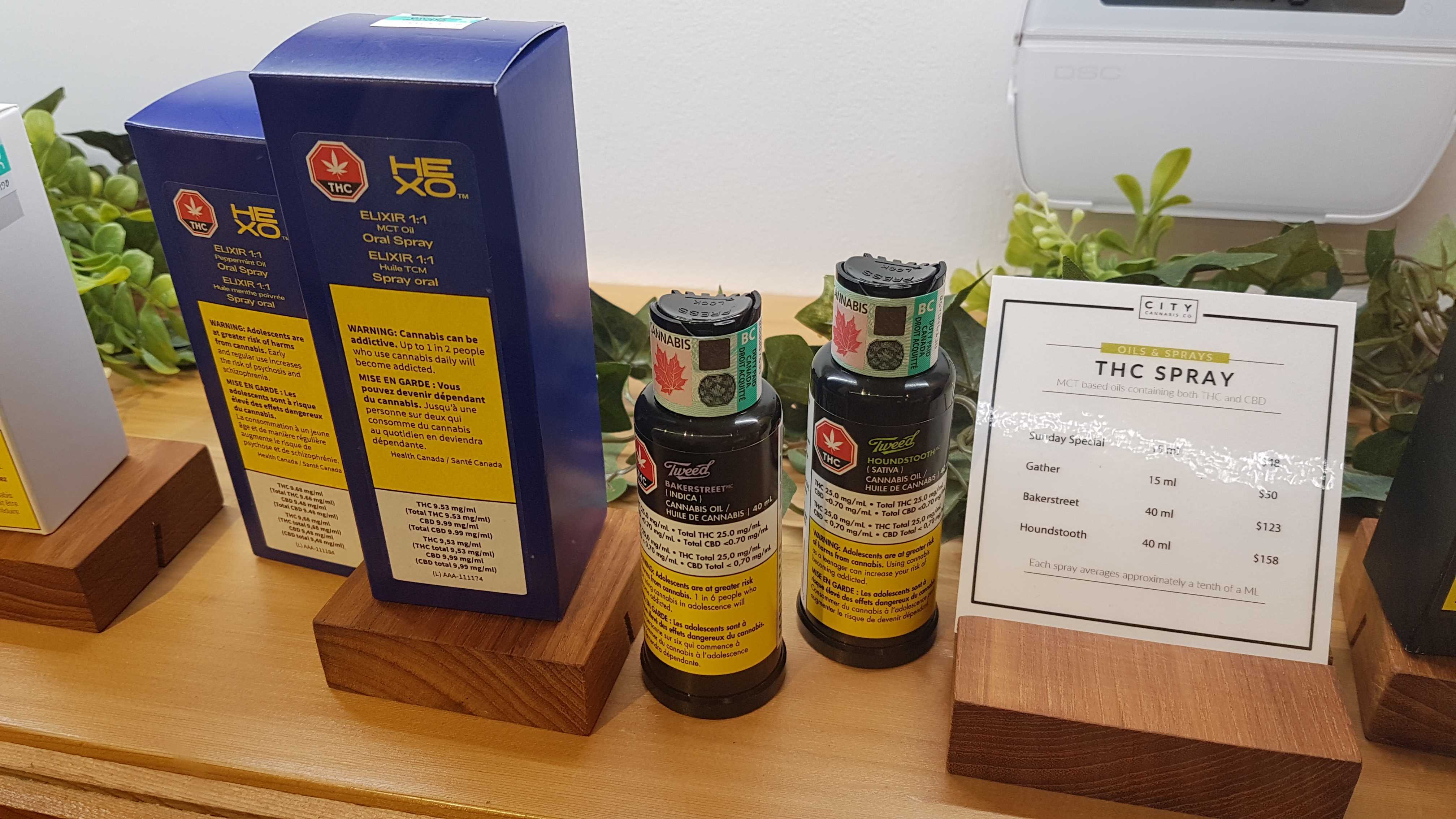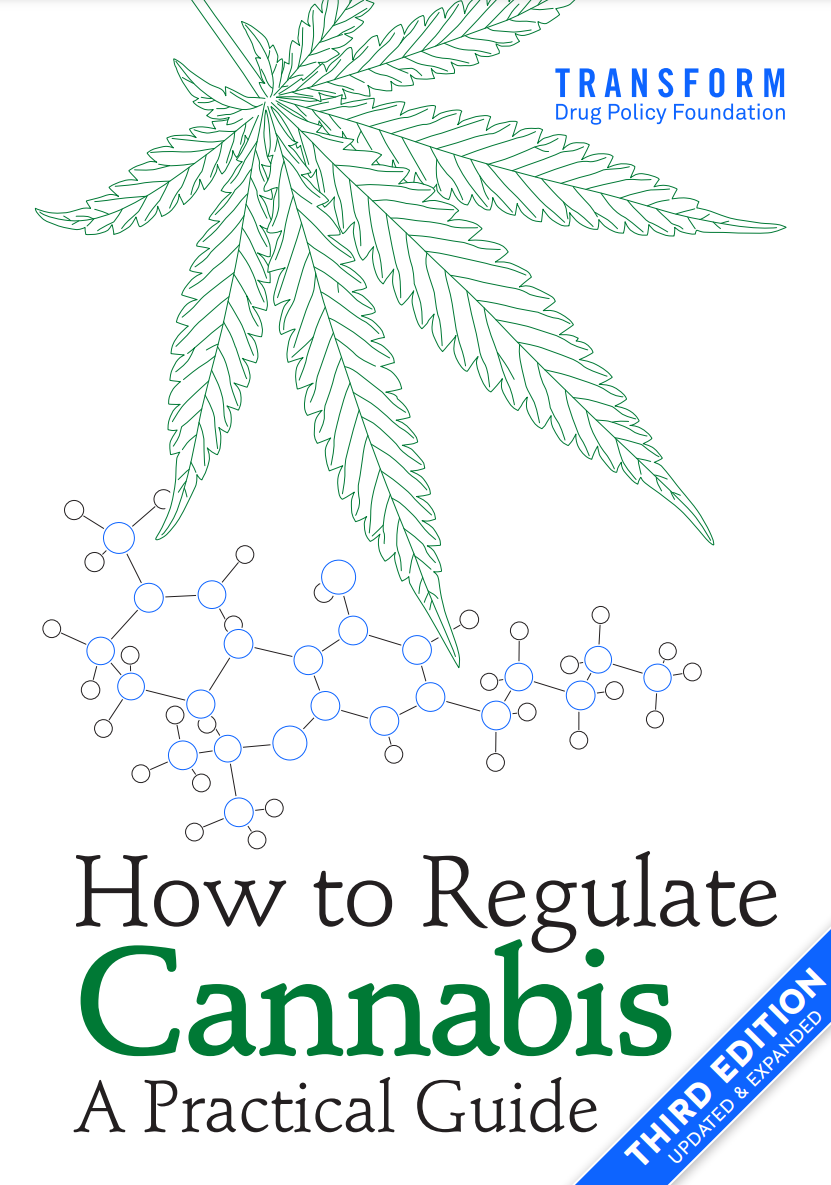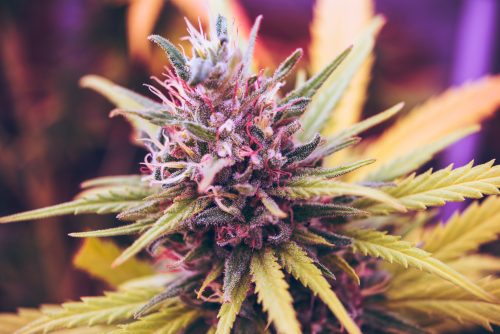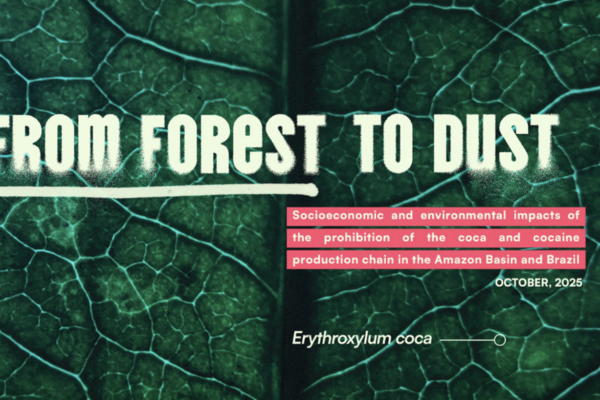20th October 2022
Recent cannabis debates have thrust the issue of cannabis potency back into the limelight. From UK calls to put cannabis in Class A because of rising potency and health harms, to leaked proposals from Germany to cap retail cannabis potency at 15% THC in their soon to be legalised market - the issue remains clouded with misunderstandings. Below is an edited excerpt from Transform's newly updated 3rd edition of 'How To Regulate Cannabis: A Practical Guide' that explores the potency issue; what does potency actually mean, how does it impact on cannabis related risks, and how can it be sensibly regulated?
There is a certain amount of confusion around the concept of cannabis potency — both what it means in technical terms, and what its implications are for the risks associated with the use of different cannabis products consumed in different ways. People are familiar with the concept of alcohol strength, expressed in percentage of alcohol content, and how this relates directly to the effects and risks of how much they consume. Standardised alcohol units are a good example. Key to their utility is that they can be readily translated between different alcohol products. However, the situation is less straightforward with cannabis, and cannot be directly compared for a number of reasons.
Cannabis potency is usually measured in terms of the percentage of its key psychoactive ingredient, Δ9-tetrahydrocannabinol (Δ9-THC or simply THC), but THC is only one of over 80 different cannabinoids found in the cannabis plant, key among these being cannabidiol (CBD). Because CBD interacts with and modifies the effects of THC, the ratio of the two is important not only as it shapes the nature of the subjective cannabis experience (CBD is thought to have a more sedative/calming effect), but also because CBD is thought to have anti-psychotic properties, potentially reducing the risks of psychotic episodes or psychotic illness related to cannabis use. The many other cannabinoids present in cannabis are less well understood but their relative proportions may also have subtle influences on the variable effects (and possibly risks) of different strains.
Lower-strength, outdoor-grown cannabis tends to be less than 10% THC, while (more commonly) indoor-grown, ‘premium’ cannabis varieties are predominantly in the 10-25% range. The potency of lower-quality and premium-grade resin has historically been roughly the same as this in European markets (but notably rising in recent years), although newer techniques such as solvent or carbon dioxide extractions have produced oils and other concentrates, such as butane hash oil (BHO, the semi-solid forms sometimes known as ‘wax’ or ‘glass’), that have extremely high potencies, some reaching concentrations of over 80% THC.
Another factor that complicates our understanding of cannabis potency is that the level of intoxication and the speed of onset of effects, which will determine the subjective experience, depend in large part on the particular preparation, method of consumption, and using behaviours.
A given amount of cannabis can be smoked (or vaporised) in different ways, in terms of how many inhalations the user takes, how deep the inhalations are and how long they are held in the lungs, so the amount of active content that different individuals actually absorb can vary quite considerably. With smoked or vaporised cannabis, the onset of the effects is very rapid, meaning that individuals are able to dose control relatively easily. If they have not reached the desired effect, they will continue. If they have reached it, they can stop. On this basis, potency would seem to be less of a concern for inhaled cannabis use, indeed higher-potency cannabis could mean fewer inhalations to achieve the same effect, thereby reducing respiratory risks. However, while such ‘auto-titration’ dose control behaviour is the norm, higher-potency cannabis can still potentially lead to higher total consumption and correspondingly pose greater risks. With more potent varieties a large dose of active content can be received in a single inhalation, and the larger such individual doses are, the harder it becomes to fine tune dosage control, meaning the potential to consume more than planned or desired is increased. This is particularly the case for novice users.
This risk of consuming more than planned (with potentially negative or undesirable effects) will be amplified when the potency of the cannabis being consumed is unknown. However, this problem can be reduced or effectively eliminated in a properly regulated system in which:
- Buyers are able to choose from a range of clearly labelled products of different potencies
- Buyers are able to take guidance from licensed, trained vendors
- There is relevant information on dosage, effects and safer use at point of sale and on all packaging

In many parts of the world, notably in Europe, smoked cannabis is also often mixed with varying proportions of tobacco, effectively diluting its potency to levels below those that would be experienced if it were smoked pure, much in the same way that alcoholic spirits can be diluted with mixers to various degrees. While this may reduce some of the above risks relating to high-potency cannabis, any benefits are probably more than outweighed by the risks associated with smoked tobacco.
The increasing average potency of illegal cannabis is a genuine observed phenomenon in the US, and to a lesser extent in Europe, although what appears to be a long-term incremental rise in average potency has provoked many exaggerated ‘reefer madness’-style claims that have little basis in reality. In Western markets at least, the increasing market dominance of indoor-grown ‘premium’ cannabis, combined with likely actual increases in its potency (through selective breeding and developments in intensive growing technologies), has probably pushed average potency up to between two to three times what it was in the 60s and 70s. Such averages do, however, disguise a great deal of variety within markets and between different localities. There was of course very potent cannabis (particularly in resin form) available in the 60s and 70s, so the suggestion that what is being consumed today is a ‘completely different drug’ is misleading: the observed trend is primarily due to there being a greater proportion of more potent varieties on the market.
The emergence of high potency concentrates like BHO is a comparatively recent phenomenon, so relatively little is known about their prevalence and impacts, particularly outside more established medical, and now non-medical markets in North America. But aside from these concentrates, if there is some truth in the ‘it’s not what we smoked in the 60s’ claims, it is due to the trend towards higher ratios of THC to CBD in intensively farmed higher-potency cannabis — with CBD content often falling to near zero as THC levels have steadily crept up. This change in the THC:CBD ratio results both from selective breeding that prioritises high THC content (which commands a higher price), as well some of the newer intensive growing techniques deployed to maximise turnover from a given grow space that can reduce CBD content.
The data on increasing potency is not especially reliable (based primarily on seizures which may not necessarily be a representative sample of markets) and conclusions are widely disputed. It is certainly the case, however, that both the general trend towards increasing potency of herbal cannabis and the parallel trend towards increasing THC to CBD ratios are not merely demand-driven, but are primarily manifestations of illegal market economics. There is an echo here of how, under US alcohol prohibition, the market shifted towards stronger spirits that provided significantly higher profits per unit weight for bootleggers. When alcohol prohibition ended, the market naturally shifted back towards sales of beers and wines. In many US and European markets it is now becoming hard to obtain anything except the more potent varieties, even when individuals would prefer something milder if given the choice. The same shift has yet to be shown for legal markets in North America, suggesting that economic dynamics in more commercial jurisdictions may similarly be more concerned with profit opportunities than public health concerns. This highlights the important role for regulation to play to curb these interests and ensure a careful balance, while protecting public health.
Recommendations
Ensuring the THC and CBD content of all retail cannabis products is routinely tested
Although potency testing and monitoring of cannabis products can be relatively expensive, a reasonable level is not an excessive burden. It is important to acknowledge that technical challenges of accurate testing have often been flagged — noting that potency can vary widely within a crop, batch or even plant (or differing challenges for testing of edibles and other preparations). But such challenges are hardly insurmountable given rapid developments in sampling and testing methodology, and realistic error margins can be built into monitoring systems and regulations.
Routine testing should be built into any regulatory framework, supported by random test purchasing, and be undertaken or commissioned independently by the regulating authorities — with cost burden covered by taxation and producer and vendor licensing fees. The intensity of testing required will become clear from levels of compliance but should err on the side of more rather than less at the outset, in order to establish clear norms and expectations for market actors. The production and in particular sale of products that diverge significantly from their stated potency should be considered a serious licence violation. Allowable error margins and penalties for violations should be clearly established. For instance, Canadian regulations establish variability limits of 15-25% above or below the stated levels of THC and CBD depending on the type of cannabis product, and in some cases the stated potency.
Ensuring consumers are aware of the potency of all retail cannabis products — and their related risks
All retail products should be clearly labelled with potency information covering THC and CBD content. This should be supported with related information on risks, potentially with a simplified numerical (e.g.1-5) strength guide. More detailed standardised information on cannabis potency and related risks should also be made prominently available at point of sale in all retail outlets. Vendors should be trained to give advice on potency and related risk issues.
Controlling the potency of retail products
Having an upper limit on the THC content of retail herbal or resin/oil cannabis for non-medical use could be seen as a sensible precautionary measure, but is problematic for a number of reasons, particularly in a more open market model. Beyond what many consumers may view as an unfair or unnecessary imposition, the obvious practical issues are exactly where such a threshold would be set and how it could be enforced.
In 2012 the Dutch government proposed a prohibition on sales of herbal cannabis over 15% THC, although this move was not approved and was opposed by almost every government office (including the police, prosecution, and forensic service) that would be involved in enforcing the limit. Research into the proposal suggested that, while the measure could “in theory [provide] a slight health benefit for specific groups of cannabis users (i.e., frequent users preferring strong cannabis…)” in practice it reflected a “political choice and based on thin evidence”. The New Zealand 2020 draft Cannabis Legalisation and Control Bill proposed similar potency limits, promoted as a key way that regulation could take back control of the market and facilitate harm reduction aims. This highlights how such measures continue to be politically useful, even in lieu of evidence as to their practical impact.
Even if most consumers are unlikely to be concerned by an upper limit at or near this level (which would still be considered at least adequately strong herbal cannabis by most) the fact is that any such limit is inevitably quite arbitrary, and as such could lead to arbitrary enforcement outcomes. This is especially the case given the improving but still imperfect nature of both potency control among growers (even with the most carefully cultivated cannabis there will be a certain amount of potency variation between crops, and even within any given crop or sample) and potency testing technology.
If the aim is to encourage the use of lower-potency products as a way of moderating risks, then a more sensible approach would appear to be a combination of:
- Strict product testing and labelling requirements that ensure buyers know exactly what they are consuming, enabling them to make informed choices
- Consumer education about potency-related issues/risks, supported by packaging and point of sale info, and training requirements for vendors
- Responsible retailing, which could be encouraged through licensing requirements for vendor training in how to provide potency and risk advice to purchasers
- Variable tax rates (or other price controls), which could be employed in order to encourage the use of less potent products, as is done with alcohol in many countries
If limiting the potency of retail cannabis under a relatively open market model is problematic, under a more regulated market model such as that found in Uruguay it is less of a challenge, as the regulatory authorities license producers to provide the specified products that will be available for sale. Even in this more restricted scenario, cannabis ‘connoisseurs’, or those who desire higher-potency strains, can still be catered for either by provisions on home growing or cannabis social clubs.
Restrictions on sales of high-potency concentrates are a more reasonable proposition if such products are shown to be associated with significantly increased risks, but again such restrictions face the challenges of where any potency threshold should be drawn and how it would be enforced. Such decisions will be significantly shaped by the nature of existing demand and patterns of use. Certainly if there is little or no existing demand for high-potency concentrates, establishing a new framework for making them legally available is likely to be something regulators will naturally want to avoid (advocates for medical cannabis access have made the case that concentrates may have specific medical utility - but such availability is lilely to be via a different regulatory medical channel).
However, given the fast-rising popularity of concentrates in certain regions (particularly North America), prohibiting options for retail access where demand is already established would likely push many consumers back to the illegal market. In US states without regulated non-medical markets, 15% of cannabis consumers report using concentrates within the past 12 months (compared to 22% in legalising states). Legal access to concentrates could be provided instead through membership-based cannabis social clubs, although this could lead to difficulties regulating safe production practices. Some of the newer production techniques for concentrates (such as CO2 and butane extractions) are quite dangerous in inexperienced hands, so licensed production and availability is probably preferable if the alternative is risky home production. For these reasons, the Canadian Cannabis Act and Regulations prohibit at-home butane extraction, instead reserving the right to licensed cultivators, processors, testers and researchers.
If potency threshold limits are adopted for herbal cannabis and/or resin/concentrates, and it seems inevitable that some jurisdictions will choose to do so, it will be important to make sure they are set high enough to cater for the large majority of existing demand in a given jurisdiction. If they are set too low it will simply create an opportunity for unlicensed producers to meet the unsatisfied demand. There will need to be constant monitoring of impacts, and the flexibility to adjust (or abandon) such thresholds in response to evidence of their impacts and effectiveness.
Enforcement of any limits will also require a reasonable amount of tolerance, to allow for the imprecision of growers, and testing technology, as discussed above. Any sanctions for threshold violations will also need to be proportionate. Such limits would sensibly be regarded more as a good practice guide for retailers or as a moderating influence on the potency of the products they sell. The aim should be to curb certain risky behaviours and prevent potency levels creeping up further, rather than to create a new form of prohibition that will needlessly penalise existing users or vendors in the future.
A different approach would be needed for edibles, with THC and CBD content by weight (and by standardised units if such a system is adopted) being clearly labelled on discrete single servings of any given edible product. What constitutes a single edible serving for an individual should be clearly defined and an upper limit on THC content per serving (by weight or standardised units) should also be established.
The approach taken in Canada has been to establish an upper limit on THC content per ‘immediate container’ (i.e. the outermost package), albeit with no corresponding limit on CBD. In practical terms, this means that where there is only one discrete edible unit in a product container, that unit is limited to 10mg of THC. However, where there are four discrete units in a product container, each unit must be no more than 2.5mg of THC (and the potency of each unit must be the same, in any event). In practice, research has highlighted that consumers find it difficult to understand cannabis labelling that merely provides potency information in terms of milligrams of THC, with similar issues in relation to percentages. Effectively communicating potency information to consumers may therefore require developing an easily understandable numerical, colour-coded or traffic light-type scale as well as a standardised THC unit (see above).
There is a parallel issue around possible regulation of CBD content, and THC:CBD ratios. Attempting to establish an enforceable ratio limit would be even more problematic than THC content thresholds, not least as the scientific basis for judgements about the risks of any given THC:CBD ratio is not well established. For more restrictive regulatory models, it makes sense to ensure that licensed herbal or resin cannabis products all include a CBD ‘buffer’ — ranges of between 1-4% CBD, or a minimum 10:1 THC:CBD ratio, have been suggested as a starting point (albeit based on the limited available research). For less restrictive market models this will primarily need to be dealt with through clear product labelling, consumer education, and responsible retailing, all informed by the emerging body of knowledge on this particular question.
This is an edited excerpt from 'How To Regulate Cannabis; A Practical Guide' (Transform 2022), By Steve Rolles & Harvey Slade. The full text (including references) is available here as a free pdf download (in English, Spanish, and German). The English version is also available to buy in print.





